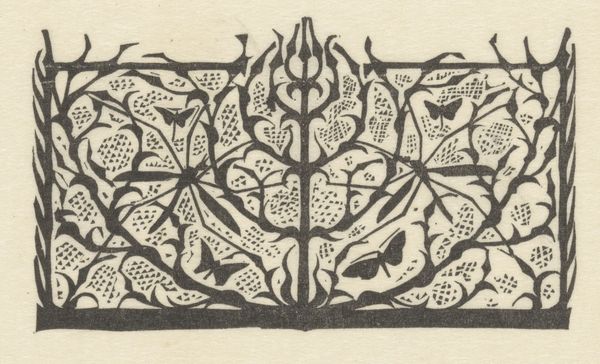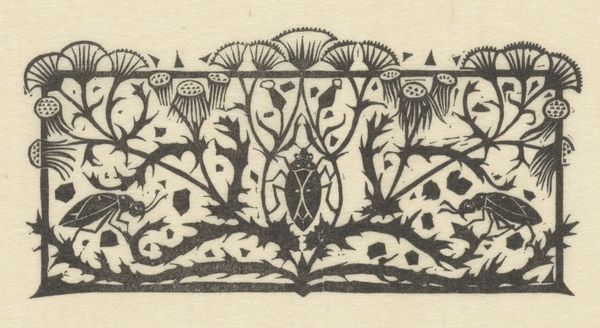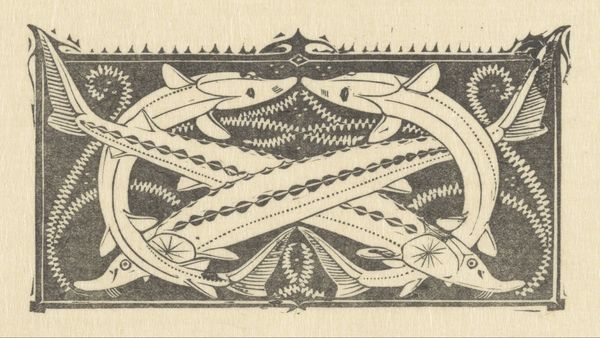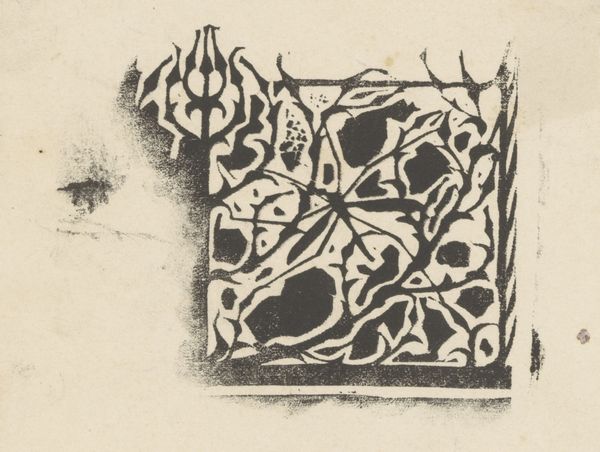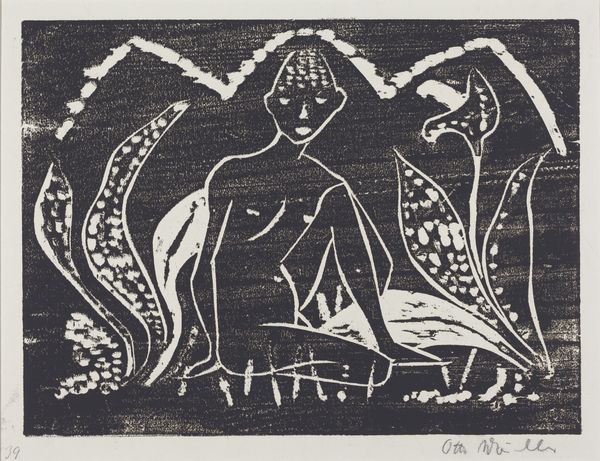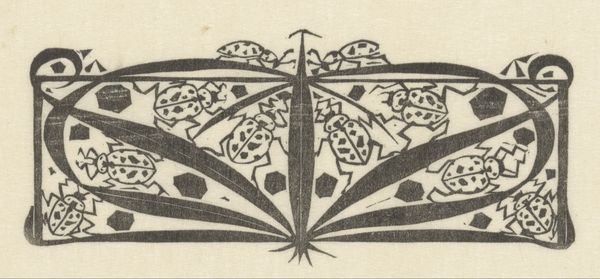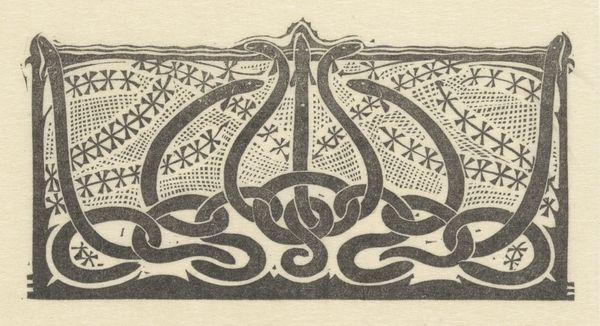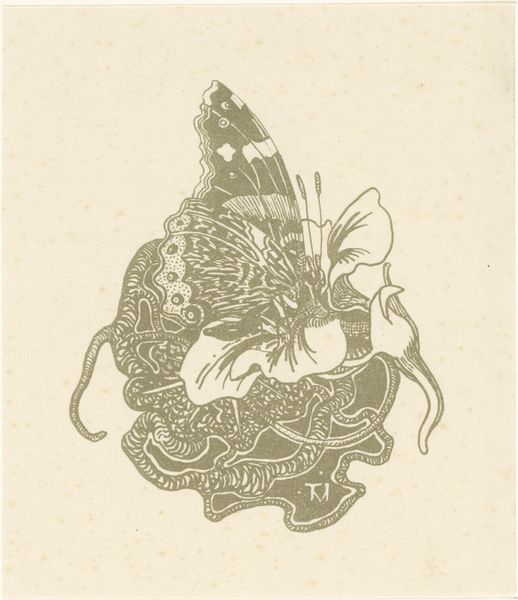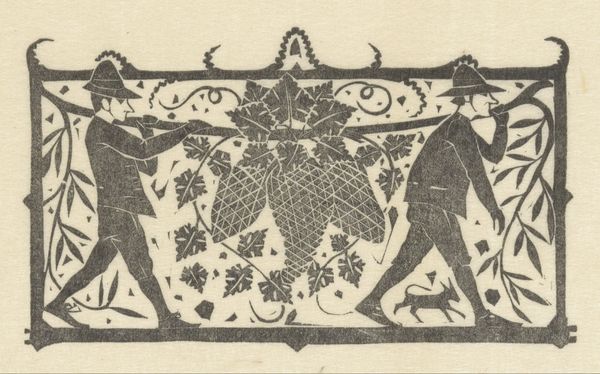
Titelhoofd met mediterende vrouw, venushaar en honden 1893 - 1927
0:00
0:00
gerritwillemdijsselhof
Rijksmuseum
print, relief-print, woodcut
#
portrait
#
art-nouveau
# print
#
relief-print
#
dog
#
figuration
#
geometric
#
plant
#
woodcut
#
symbolism
#
decorative-art
#
nude
Dimensions: height 58 mm, width 119 mm
Copyright: Rijks Museum: Open Domain
Curator: Immediately, the texture strikes me—it’s so tactile. I want to know more about the printmaking process. Editor: Well, you're in luck! This is a relief print titled "Titelhoofd met mediterende vrouw, venushaar en honden" by Gerrit Willem Dijsselhof. The Rijksmuseum dates it between 1893 and 1927. It's a woodcut, so a laborious carving process no doubt. Curator: Exactly! And what wood was used? The black ink makes a stark contrast. You can really see the skill required to achieve that level of detail with the dogs and vegetation. Was this a common medium at the time for this artist? Was the cost of the materials significant to its circulation? Editor: Good questions. Dijsselhof was certainly part of a wave embracing printmaking, particularly woodcuts, as it became more intertwined with the Arts and Crafts movement and the Art Nouveau aesthetics taking hold. We often see such prints acting as illustrations, bordering designs, or decorative elements for the bourgeois interior, part of a broader aesthetic culture intended for wide consumption. Curator: It really exemplifies the Symbolist aesthetic, with its blend of the natural and the spiritual, wouldn't you agree? Look at how the woman is centered within this framework of nature. The inclusion of dogs creates an intriguing commentary on loyalty and instinct. What kind of public reception would a piece with a nude receive at the time? Editor: Considering the timeframe and Dijsselhof’s associations with more progressive artistic circles, I suspect this work might have been exhibited in places keen to showcase modern design. What I find especially captivating is the confluence of the figure as subject and the flatness encouraged by the medium itself. There is a kind of interplay happening. The black and white really emphasizing that graphic sensibility. Curator: Yes, I think both Dijsselhof and the artistic community were trying to democratize art by creating more affordable pieces for a wide market. The choice of the medium underscores the desire to move beyond elite art circles and connect with a wider audience that would understand these simplified aesthetics and recognize how everyday objects should display as much careful workmanship and thoughtfulness as a fine painting in an aristocrat’s gallery. Editor: Well, examining the art through that particular lens certainly does highlight the socio-cultural value beyond the surface and speaks to a broader dialogue around the industrialization of culture itself at that moment. Curator: Indeed. It is hard not to consider production with this print. The relief method makes that hard manual labor evident! Editor: Exactly. A lasting testament to the fusion of design, craft, and social values that continues to inspire artists and engage audiences today.
Comments
No comments
Be the first to comment and join the conversation on the ultimate creative platform.

